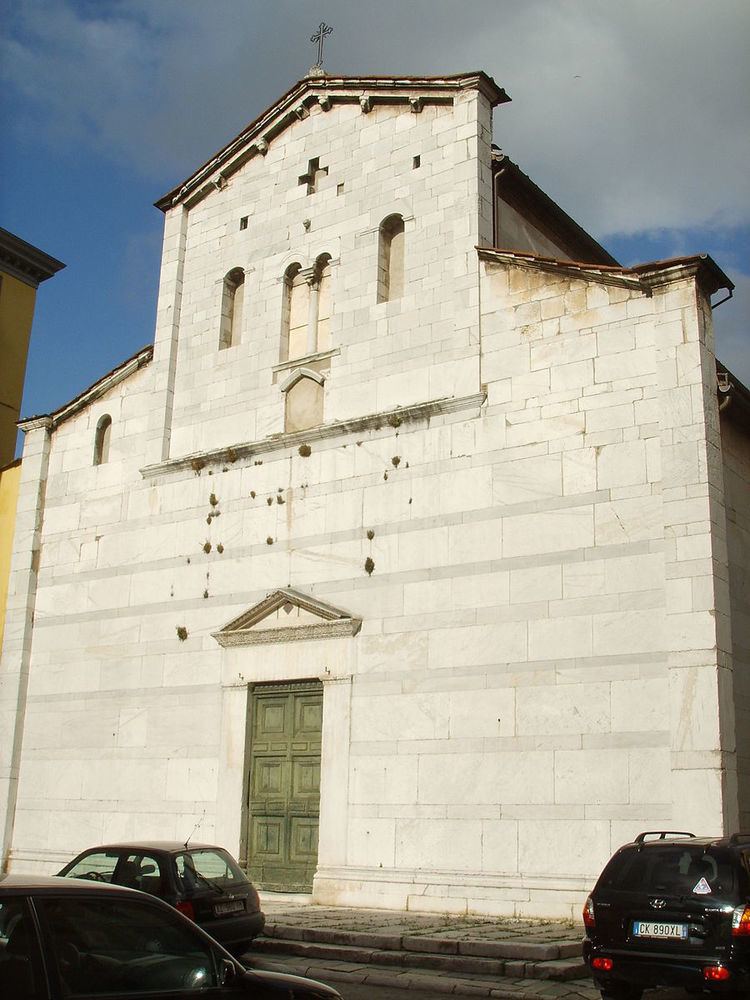Website sant'alessandro | Affiliation Roman Catholic Status Parish church Groundbreaking 9th century | |
 | ||
Address Vicolo Sant'Alessandro, 3, 55100 Lucca LU, Italy Similar Chiesa dei Santi Giovanni, Santa Maria Forisport, San Giusto - Lucca, San Pietro Somaldi - Lucca, San Cristoforo - Lucca | ||
Sant’Alessandro Maggiore is a Romanesque-style, Roman Catholic parish church in Lucca, region of Tuscany, Italy.
Contents
History
First mentioned in a document dated 893, the layout is that of a Romanesque basilica, with little decoration, giving the facade a sober classicism.
The present building, however, contains the structures of an older church, whose date of construction is still a matter of controversy, and whose features are surprisingly close to those of Roman architecture: This church is a rare and good preserved example of medieval classicism, an evidence of survival in Italy, during the Dark Ages, of Roman architectural tradition. The small building can be compared only with monuments as the Baptistry in Florence or the Basilica of San Salvatore in Spoleto.
Description
The building is entirely dressed in perfectly smooth white limestone slabs according to a layout of alternating high and low bands, in a system which is evocative of the opus quadratum pseudoisodomum of the buildings of antiquity. The apertures framing sculpted details — within this rigorously geometric design — are also directly derived from the Ancient Roman architecture. This interpenetration of a static, geometric system can also be seen in the arches within the church, where the white and coloured stone is arranged symmetrically throughout, as is found in sixth and seventh century buildings such as the Mausoleum of Theodoric in Ravenna and the Dome of the Rock in Jerusalem (or in peristyle of Diocletian's Palace in Split, ca. 300 AD). As is also to be seen in the early Christian basilicas in Rome, the interior of the church is divided into functional areas and crossed by a liturgical route which is clearly indicated, down to the smallest detail, by variations in the colour of the marble and by the different types of capital in pairs which match across the nave. There are further reminders in the taste for varietas which (in the same strictly symmetrical context) informs all the sculpted ornamentation, whose careful variations have parallels in the Basilica of San Salvatore in Spoleto and in the capitals of the Temple of Saturn in Rome, rebuilt in the fourth century A.D.
Finally, the character of the sculpture is unusual. On the one hand, the vegetal elements -geometric, flat and with finely incised details — are set out according to a predominantly paratactic/symmetrical system (such elements are typical of sculpture of later antiquity), while on the other, the designs which are repeatedly copied (including unusual Corinthian variations and rare motifs of the Augustan Age) are typical of the first and second centuries A.D. While the most recent parts of the building correspond to twelfth century architecture (in particular the work of Biduino and his school), the unusual features of the older Sant’Alessandro make it an isolated example in local medieval architecture, the construction of which is explicable in one of only two ways – that the church is the work of workmen from outside Lucca (but where they came from has still to be established) or that it is evidence of the survival of the Roman architectural tradition in Lucca. That this tradition should have survived during the Middle Ages becomes more and more unlikely the further away from Late Antiquity we come, and it is therefore probable that the date of construction of the primitive Sant’Alessandro is much earlier, than the Romanesque Age.
